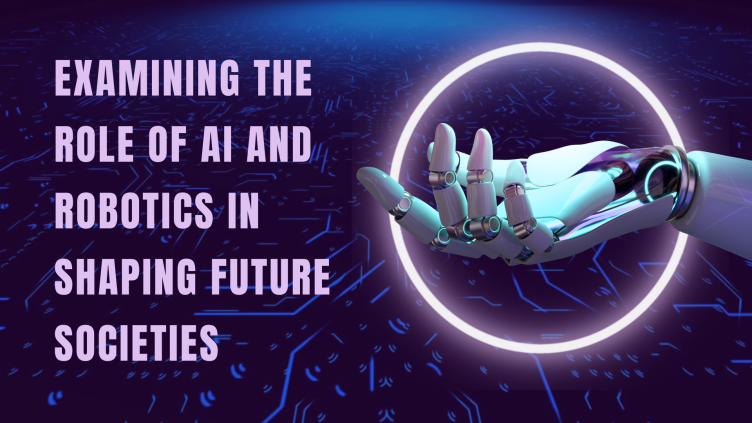In a world where technology evolves at a breathtaking pace, artificial intelligence (AI) and robotics stand at the forefront, promising to transform every facet of our lives. From healthcare and education to the economy and our social interactions, these advancements are not just reshaping industries but also the very fabric of society. Let’s embark on an exploration of how AI and robotics are sculpting our future, replete with fascinating examples and a peek into what lies ahead.
The Dawn of a New Era: AI and Robotics Defined
Before delving into their impact, it’s essential to understand what we mean by AI and robotics. AI refers to the simulation of human intelligence processes by machines, especially computer systems. These processes include learning, reasoning, and self-correction. Robotics, on the other hand, involves the design, construction, operation, and use of robots to perform tasks traditionally carried out by humans.
Revolutionizing Healthcare: Precision and Personalization
Imagine a world where your health is monitored in real-time, where diseases are detected early, and treatments are tailored specifically to your genetic makeup. This isn’t science fiction; it’s the reality that AI and robotics are bringing to healthcare.
AI-powered diagnostic tools, such as IBM’s Watson, can analyze vast amounts of medical data to provide accurate diagnoses and treatment recommendations. Watson has successfully identified rare diseases that stumped human doctors. Similarly, robots like the da Vinci Surgical System enable surgeons to perform complex procedures with unprecedented precision, reducing recovery times and improving patient outcomes.
Consider the case of AI in radiology. AI algorithms can now analyze medical images faster and more accurately than human radiologists. For instance, Google’s DeepMind developed an AI system that can detect over 50 eye diseases with the same accuracy as world-leading experts, transforming how conditions like diabetic retinopathy and age-related macular degeneration are diagnosed and treated.
Education: Personalized Learning at Scale
Education is another arena where AI and robotics are making significant strides. Traditional one-size-fits-all approaches to teaching are being supplanted by personalized learning experiences tailored to each student’s needs. AI-driven platforms like Coursera and Khan Academy use machine learning algorithms to adapt lessons based on a student’s progress, strengths, and weaknesses.
Moreover, robots are being introduced into classrooms to assist teachers and engage students. In Japan, for example, humanoid robots like Pepper are being used to teach English, providing interactive and immersive language learning experiences. These robots can assess students’ facial expressions and adjust their teaching methods accordingly, making learning more engaging and effective.
The Workforce: Automation, Job Displacement, and New Opportunities
One of the most contentious aspects of AI and robotics is their impact on employment. Automation powered by AI and robotics is set to displace certain job categories, particularly those involving routine, repetitive tasks. A 2017 report by McKinsey & Company estimated that up to 800 million jobs worldwide could be automated by 2030.
However, it’s not all doom and gloom. While some jobs will disappear, new ones will emerge. History shows us that technological advancements create new industries and opportunities. For example, the rise of the internet led to the creation of jobs like web developers, cybersecurity experts, and digital marketers—roles that didn’t exist a few decades ago.
The key challenge lies in managing this transition. Governments and educational institutions must invest in retraining programs to equip workers with the skills needed for the jobs of the future. AI and robotics will also create demand for roles that involve designing, maintaining, and improving these technologies, leading to a surge in STEM (Science, Technology, Engineering, and Mathematics) professions.
Social Interactions and Ethical Considerations
As AI and robotics become more integrated into our daily lives, they are also influencing our social interactions and raising profound ethical questions. Social robots like Jibo and Kuri are designed to interact with humans, providing companionship and assistance. In elder care, robots such as Paro, a therapeutic robot seal, are being used to provide emotional support and reduce loneliness among the elderly.
However, these advancements bring ethical considerations to the forefront. Questions about privacy, data security, and the potential for AI to perpetuate biases are hot topics of debate. For instance, AI algorithms used in hiring processes have been found to exhibit biases against certain demographics, highlighting the need for transparency and accountability in AI development.
Moreover, the concept of AI personhood is gaining traction. As AI systems become more autonomous, the legal and moral implications of their actions must be addressed. Should an AI system be held accountable for decisions it makes? How do we ensure that AI operates within ethical boundaries? These are questions that society must grapple with as we move forward.
The Smart City Revolution
AI and robotics are pivotal in the development of smart cities—urban areas that leverage technology to improve the quality of life for residents. From traffic management and energy efficiency to public safety and waste management, AI-driven solutions are making cities more livable and sustainable.
In Singapore, for instance, AI is used to monitor and manage traffic flow, reducing congestion and commute times. The city’s smart waste management system uses sensors to optimize garbage collection routes, minimizing fuel consumption and emissions. Meanwhile, in Barcelona, AI-powered streetlights adjust their brightness based on pedestrian and vehicular traffic, enhancing energy efficiency.
The Future of AI and Robotics: What Lies Ahead?
Looking ahead, the potential of AI and robotics is boundless. We are on the cusp of breakthroughs that will further blur the lines between science fiction and reality. Quantum computing promises to exponentially increase AI’s processing power, enabling the development of even more sophisticated and intelligent systems.
In robotics, advancements in materials science and nanotechnology could lead to the creation of robots capable of performing tasks at the molecular level, revolutionizing fields like medicine and manufacturing. Imagine nanobots that can perform surgery from within the human body or robots that can assemble complex machinery with unparalleled precision.
Conclusion: Embracing the Future
As we stand on the brink of this technological revolution, it is crucial to approach the future with a sense of curiosity, responsibility, and ethical consideration. AI and robotics hold the promise of solving some of humanity’s most pressing challenges, from healthcare and education to urban living and environmental sustainability.
However, realizing this potential requires a concerted effort from all sectors of society. Policymakers must create frameworks that encourage innovation while safeguarding public interest. Educators must equip the next generation with the skills to thrive in a technologically driven world. And as individuals, we must remain open to change, continuously learning and adapting.
In examining the role of AI and robotics in shaping future societies, one thing is clear: the future is not something that happens to us but something we actively create. With thoughtful planning and ethical consideration, we can harness the power of these technologies to build a better, more equitable world for all.








One Response
Your blog is an oasis in a world filled with negativity and hate Thank you for providing a safe space for your readers to recharge and refuel